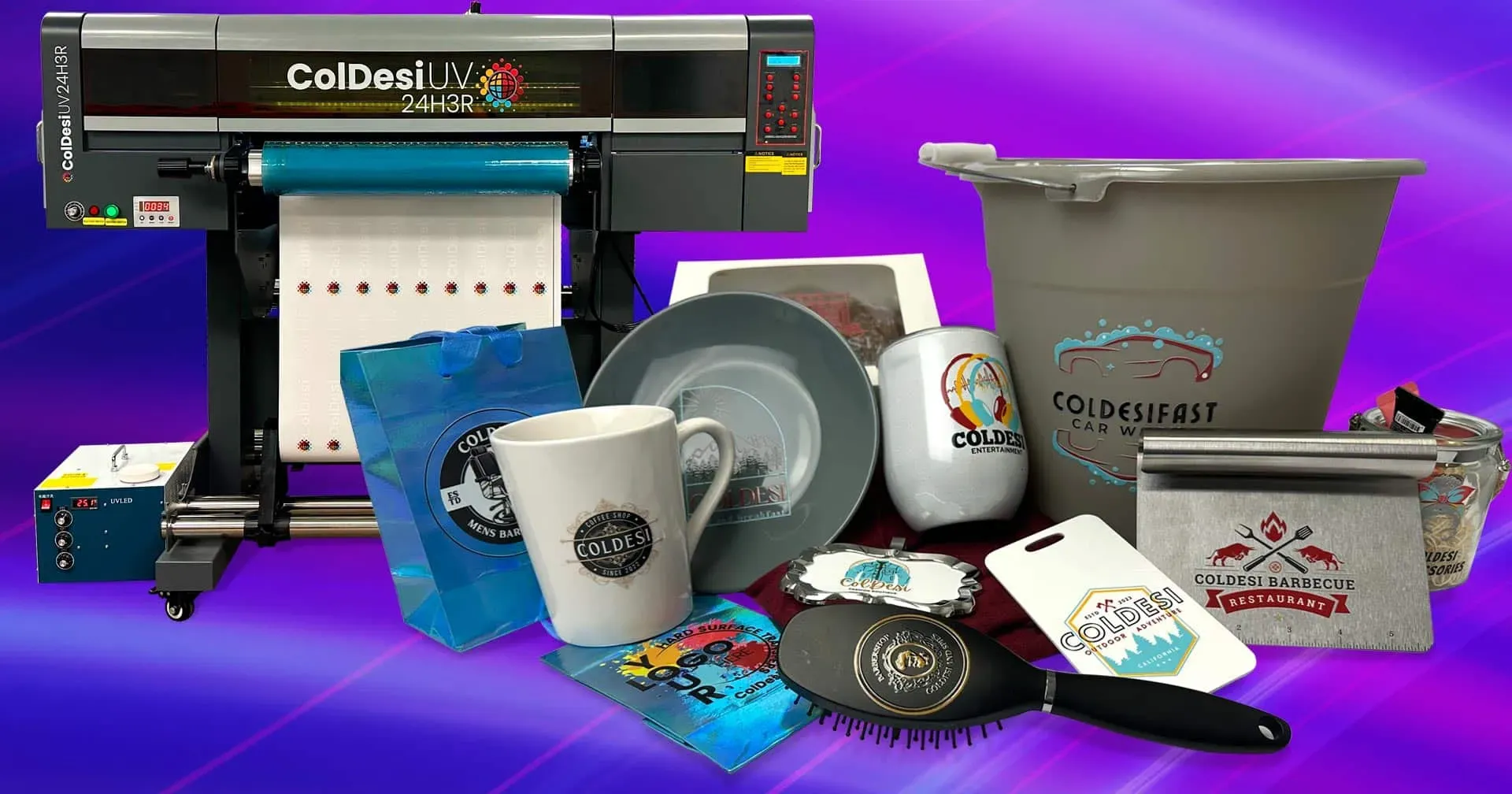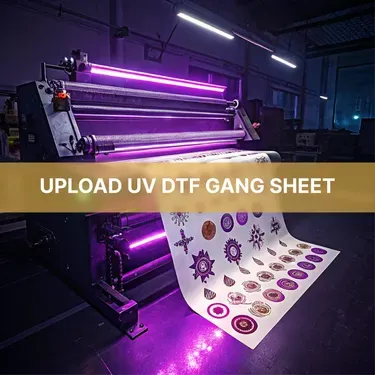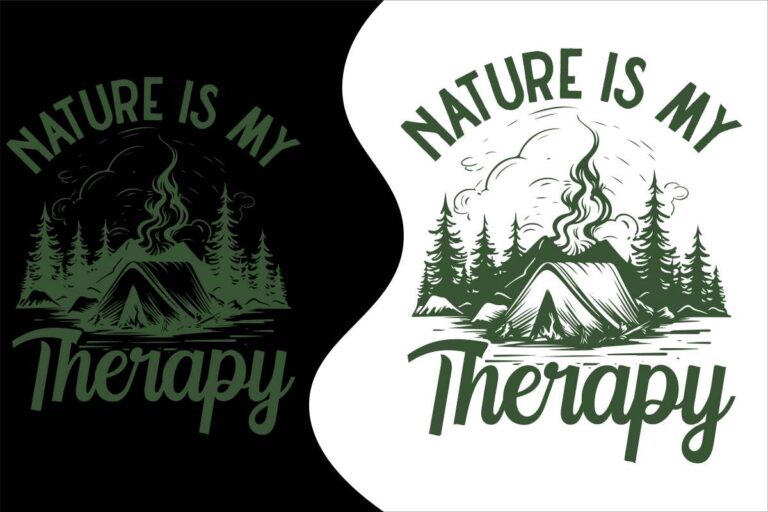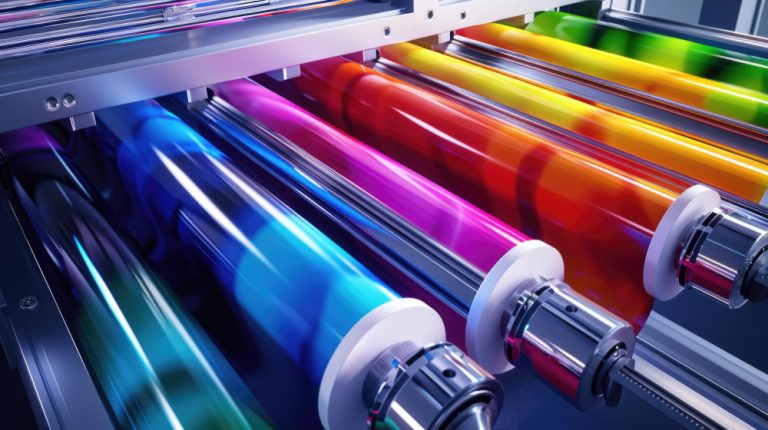
UV DTF printing, or ultraviolet direct to film printing, represents a revolutionary shift in the world of eco-friendly printing. As environmental sustainability becomes a priority for businesses globally, UV DTF printing offers an innovative approach that combines advanced UV printing technology with direct-to-film techniques. This method not only produces vibrant and durable images on various materials but also minimizes waste and harmful emissions, making it a cornerstone of sustainable printing practices. With increasing demand for responsible manufacturing processes, UV DTF printing stands out as a prime example of printing advancements that cater to both quality and ecological concerns. In this article, we explore the numerous benefits and trends surrounding this remarkable technology, highlighting its impact on the future of the printing industry.
Also known as ultraviolet direct-to-film printing, this cutting-edge technique merges the efficiency of direct-to-film methods with the vivid capabilities of UV inks. By employing a unique process that prints images onto a specialized film, this method allows for high-resolution graphics to be transferred seamlessly onto a variety of substrates, including textiles and metallic surfaces. The adoption of this technology exemplifies a broader movement towards sustainability in printing, offering businesses an opportunity to lessen their environmental footprint while still achieving superior print quality. Furthermore, with advancements in printing technology continuously reshaping industry standards, the integration of eco-friendly practices through UV DTF printing is crucial for companies aiming to maintain competitiveness in an increasingly conscientious marketplace.
Understanding UV DTF Printing: A Green Innovation
UV DTF printing, or ultraviolet direct to film printing, represents a significant leap in printing technology that combines traditional direct-to-film methods with the enhanced capabilities of UV inks. This process allows for the transfer of high-quality images directly onto various substrates, creating vibrant and durable prints that are built to last. By incorporating UV technology, which cures the ink quickly using ultraviolet light, this method significantly reduces drying times and resource consumption compared to conventional inks that often rely on solvents or water.
The green credentials of UV DTF printing are particularly noteworthy. Unlike some traditional printing processes that can emit harmful VOCs (volatile organic compounds) into the atmosphere, UV DTF utilizes inks that are almost entirely VOC-free, promoting better air quality for workers and consumers alike. Furthermore, the precision of direct-to-film applications ensures that less ink is wasted during the printing process, making it a cost-effective and environmentally sound alternative.
Eco-Friendly Printing Technologies: The Role of UV DTF
Eco-friendly printing technologies are rapidly gaining ground as consumers and businesses alike become increasingly aware of their environmental impact. UV DTF printing stands out as one of the most promising advances in this sector, particularly due to its ability to reduce waste and improve efficiency. This printing method minimizes the use of harmful chemicals, aligning with the growing push towards sustainable practices across various industries.
As a testament to its eco-friendly approach, UV DTF printing not only conserves raw materials but also incorporates sustainable inputs such as recyclable films and inks. Companies utilizing this technology showcase a commitment to responsible production methods, fulfilling the demands of environmentally conscious consumers who prioritize products with minimal ecological footprints. By integrating UV DTF printing into their operations, businesses are not just enhancing print quality but are also making a positive contribution towards a greener planet.
The Market Growth of Eco-Friendly Printing Solutions
The eco-friendly printing market is experiencing exponential growth, driven in part by the increasing demand for sustainability in production practices. Analysts predict that the market for eco-friendly printing solutions, including UV DTF technologies, will continue to expand as more companies recognize the financial and ethical benefits of adopting greener methods. Businesses are realizing that integrating sustainable practices can lead to enhanced brand loyalty and attract a wider customer base.
For manufacturers, embracing eco-friendly printing techniques represents a strategic advantage in the marketplace. With regulations becoming more stringent around environmental footprints, UV DTF printing provides a framework for compliance while simultaneously improving operational efficiencies. Brands that pivot to sustainable printing not only stand to benefit from cost savings, but they also position themselves as leaders in a shifting industry landscape increasingly dictated by sustainability.
Innovative Advancements in UV DTF Technology
Recent advancements in UV DTF printing technology have revolutionized the industry, making it possible for businesses to achieve higher quality prints with greater efficiency. Leading manufacturers are investing in cutting-edge equipment that not only boosts productivity but also enhances the versatility of output. These innovations allow companies to print on a wider variety of materials, ranging from textiles to rigid substrates, expanding the scope of applications for UV DTF printing.
Moreover, ongoing research in ink formulation seeks to improve both the sustainability and performance of UV inks. Innovations like biodegradable inks and more energy-efficient curing processes are being explored to further reduce the environmental impact of UV DTF printing. These advancements indicate a promising future for the technology, where efficiency and eco-friendliness converge, paving the way for a new era in sustainable printing.
Case Studies in UV DTF Printing Adoption
Numerous case studies illustrate the successful adoption of UV DTF printing across diverse industries, highlighting its benefits in real-world applications. For example, companies involved in promotional merchandising have reported significant improvements in product quality and customer satisfaction after transitioning to UV DTF. This technology allows them to create visually appealing prints while maintaining their dedication to environmentally friendly practices, thus giving them a competitive edge in the market.
Furthermore, businesses that have embraced UV DTF printing often experience cost savings stemming from reduced material waste and streamlined production processes. By showcasing their commitment to sustainability through the use of eco-friendly printing solutions, they attract a customer base that increasingly prioritizes environmental responsibility, ultimately reinforcing their market position and profitability.
Navigating Challenges in Adopting UV DTF Printing
Transitioning to UV DTF printing technology can present several challenges for businesses, particularly regarding initial investment costs. High-quality UV DTF printers can require a significant upfront commitment, making it difficult for smaller businesses to keep pace with competitors who have the financial means to invest in such technology. Companies must weigh these costs against the long-term benefits of improved efficiency and reduced waste to make informed decisions about the transition.
Training staff to operate these advanced printing systems is another hurdle that businesses face. Ensuring that employees are equipped with the necessary skills to fully leverage UV DTF technology is essential for maintaining output quality and minimizing operational disruptions. As the industry continues to evolve, companies must remain adaptable, continuously updating their training programs to incorporate the latest advancements and techniques in UV DTF printing.
Frequently Asked Questions
What is UV DTF printing and how does it improve sustainable printing practices?
UV DTF printing, or ultraviolet direct to film printing, combines direct-to-film technology with UV inks to produce high-quality prints on various materials. This method enhances sustainable printing practices by using less ink and producing lower amounts of waste, thereby reducing environmental impact.
How does UV DTF printing reduce VOC emissions compared to traditional printing methods?
UV DTF printing utilizes UV inks that are generally low in volatile organic compounds (VOCs), which significantly decreases harmful emissions in the printing process. This reduction promotes a healthier environment for both workers and consumers, aligning with eco-friendly printing goals.
What materials can be used with UV DTF printing technologies?
UV DTF printing is versatile and can be applied to a wide range of materials, including fabrics, plastics, and metals. This flexibility allows for diverse applications in industries like fashion and manufacturing, making it a key player in sustainable printing innovation.
How have advancements in UV DTF printing technology impacted the printing industry?
Recent advancements in UV DTF printing technology have led to faster print speeds and improved quality, enabling businesses to increase productivity. Innovations from leading manufacturers also allow for handling various substrates, enhancing creativity and efficiency in sustainable printing.
What are the cost implications of adopting UV DTF printing for businesses?
While UV DTF printing technology may require a significant initial investment, it can lead to cost savings over time by reducing material waste and enhancing product quality. Businesses embracing this eco-friendly printing method can improve their efficiency and attract sustainability-focused customers.
What sustainability benefits do companies gain from using UV DTF printing?
Companies using UV DTF printing experience several sustainability benefits, including reduced textile waste, lower VOC emissions, and the ability to use biodegradable or recyclable materials. This aligns with increasing consumer demand for eco-friendly printing solutions and enhances brand image in a competitive market.
| Key Points | Description |
|---|---|
| What is UV DTF Printing? | A unique hybrid process combining direct-to-film technology with UV inks for high-quality prints on various substrates. |
| Eco-Friendly Advantages | Reduced VOC emissions, less textile waste, and the use of sustainable materials. |
| Market Trends | The global eco-friendly printing market was valued at approximately USD 18.47 billion in 2021 and is growing as more businesses adopt sustainable practices. |
| Innovation and Technology | Investments by companies like Mimaki and Roland improve print speed and quality, allowing greater flexibility in design. |
| Case Studies and Adoption | Successful applications in promotional products and custom apparel, resulting in reduced waste and increased customer satisfaction. |
| Challenges and Considerations | Initial investment costs, staff training needs, and the rapid pace of technological advancements pose challenges for adoption. |
Summary
UV DTF printing is revolutionizing the landscape of eco-friendly printing solutions by integrating sustainability with high-quality output. This innovative technology not only meets the demands for vibrant and durable prints on various materials but also prioritizes ecological responsibility through reduced emissions and waste. As the printing industry navigates the challenges of environmental degradation, UV DTF printing emerges as a pivotal player in advancing sustainable practices, allowing businesses to appeal to a growing consumer base that values environmental consciousness. In the coming years, we can anticipate further advancements and wider adoption of UV DTF printing, further solidifying its role in shaping a greener future for the industry.





